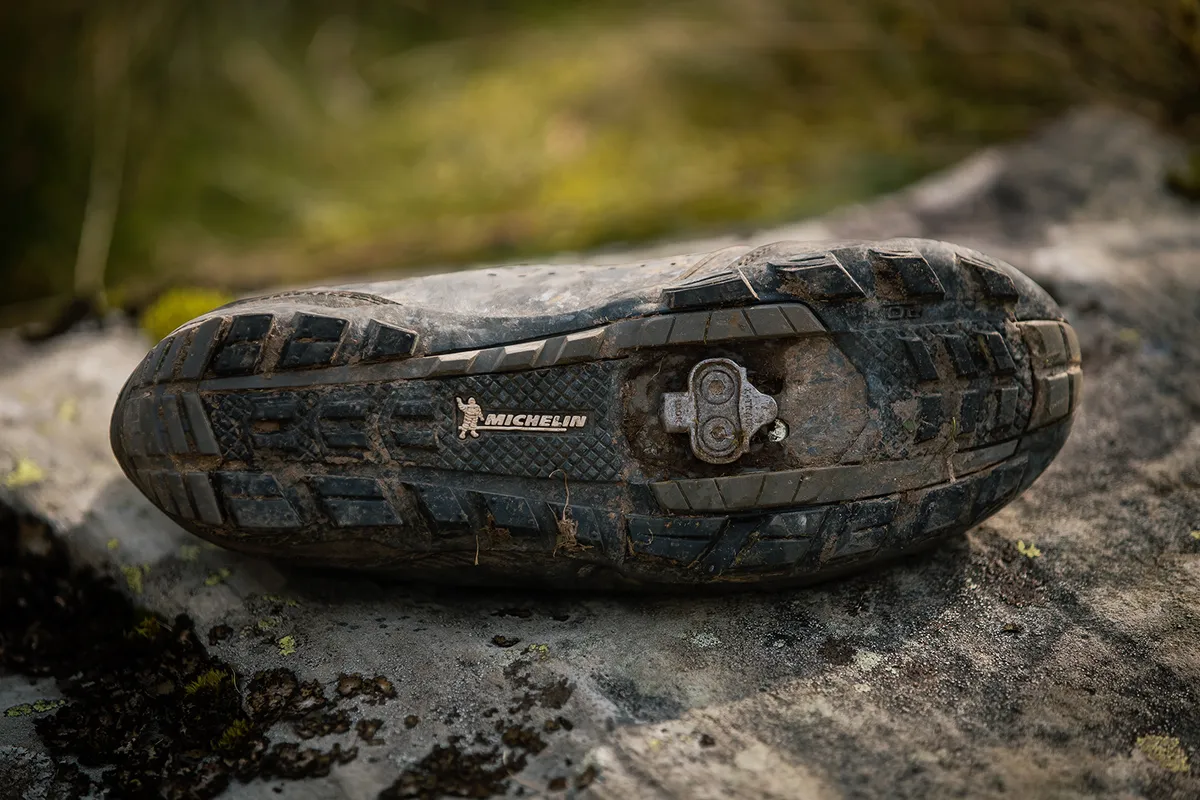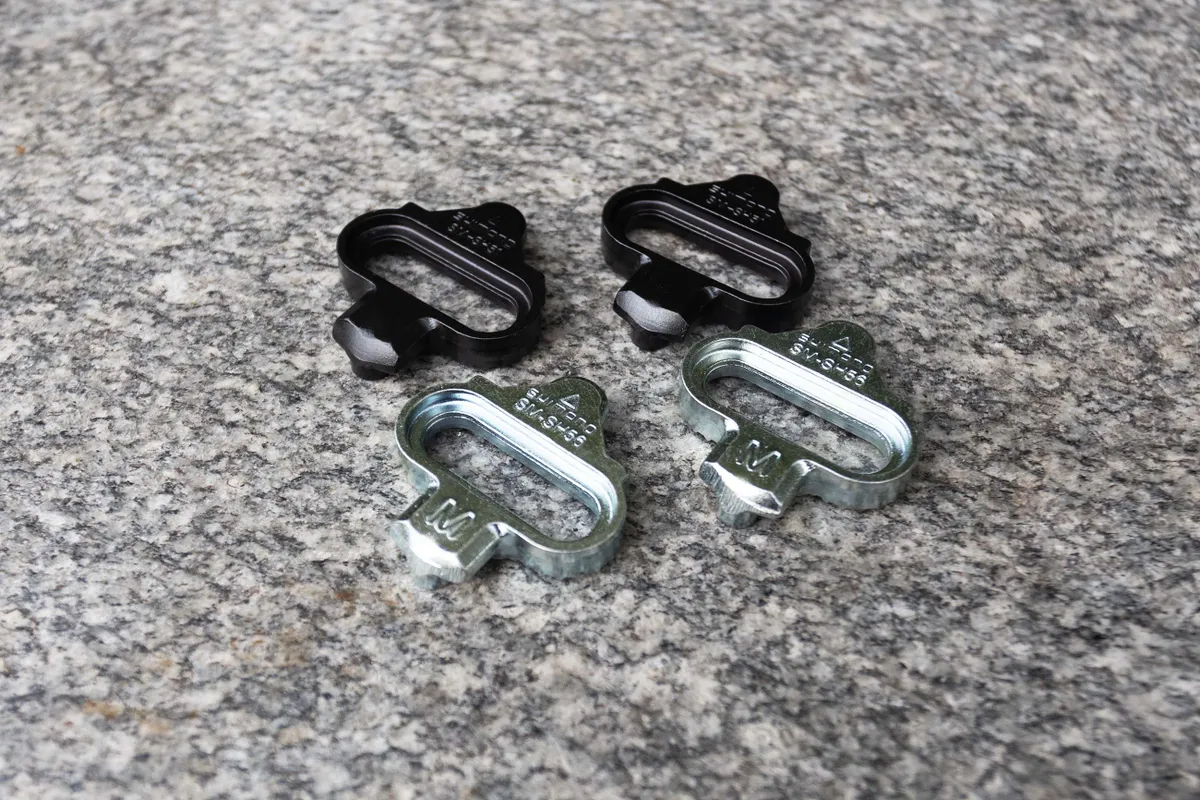If you buy a pair of Shimano clipless pedals, they’ll come packaged with a set of cleats for your shoes.
For off-road and urban SPD pedals, the cleats are made of metal and attached to the soles of your shoes with two bolts, whereas the road-specific SPD-SL plastic cleats are attached with three bolts (you can read our explainer on SPD vs SPD-SL pedals).
Shimano’s off-road pedals for mountain biking, gravel riding and cyclocross come with two-bolt cleats designated SM-SH51. However, look at the specs on Shimano’s site and it mentions the SM-SH56 as an optional cleat.
Shimano also has a range of 'Explorer' pedals, which feature the brand's 'Light Action' release system. Most of these come packaged with the SM-SH56 cleats, with SM-SH51 cleats as an option.
What’s the difference between Shimano SH-SH56 and SM-SH51 cleats, and why might you choose one over the other? Let us explain.
What are SH51 and SH56 cleats?

There’s not much difference visually between the SH51 and SH56 cleats.
They’re both metal with two recessed bolt holes, which, if you're cycling with cleats, attach to the soles of your shoes with the included bolts.
To fit the cleats, you'll need to make sure your cycling shoes are compatible with the two-bolt SPD cleats preferred for mountain bike shoes and urban riding, not the three-bolt cleats used on road cycling shoes.
There’s an arrow at the front of each cleat to make sure you attach them to your shoes the right way round. They’re interchangeable between left and right shoes.
The only clue as to which type of cleat you have is the SH51 cleats are black, whereas the SH56 cleats are silver-coloured, plus there’s an M embossed on the rear-facing tab of the SH56.
You can buy Shimano SPD-compatible cleats from other brands, too. Look’s X-Track cleats offer two equivalent cleat options, designated X-Track, equivalent to SH51 cleats, and X-Track Easy, equivalent to SH56. The type of cleat is stamped on the front of the Look cleats’ undersides.
What’s the difference between SH51 and SH56 cleats?

The difference between SH51 cleats and SH56 cleats is the number of directions in which you can release the cleat from the pedal.
SH51 cleats have a single direction of release; that’s to say you can only disengage from the pedal by pushing your heel out in a flat plane relative to the pedal, or by pushing it in.
The SH56 cleats, on the other hand, enable multi-directional release; as well as pushing your heel out or in, you can also roll your shoe on the pedal or pull up to release it.
The shape of the cleat is subtly different from the SH51 to enable this.
Which cleats should you choose?

There’s no right or wrong answer to which type of cleats to choose. Which cleats work best for you depends on the type of riding you do and also how confident you are riding with clipless pedals.
The fact that SH56 cleats are included with Shimano’s Easy Release pedals gives a clue to their advantage.
Having multiple release options means you’re much less likely to get trapped in your pedals and topple over when you come to a stop. For a clipless pedal beginner, that may increase confidence because it feels more like riding flat pedals, and you may find the easier release is preferable for urban riding.
On the other hand, most riders find it relatively easy to get used to single-release SH51 cleats and the twisting-out action necessary to disengage. The learning curve is a lot less steep than with the road-going SPD-SL pedal system.
If you’re riding on more technical terrain, particularly off-road, having multiple release angles may be a disadvantage, because you’re much more likely to come unclipped when you don’t want to. That’s why Shimano’s off-road pedal range comes with SH51 cleats rather than SH56.
The pedalling action of some riders may also make them susceptible to unwanted unclipping, making SH51 cleats a better choice.
Although SH56 cleats may be useful for a beginner worried about having problems unclipping, it’s likely that persevering with SH51 cleats, and reducing the release tension on the pedal, will help as much as the multi-directional release.
Lowering pedal-release tension is simple, by turning the hex nut on the release mechanism at the rear of the pedal anticlockwise.
